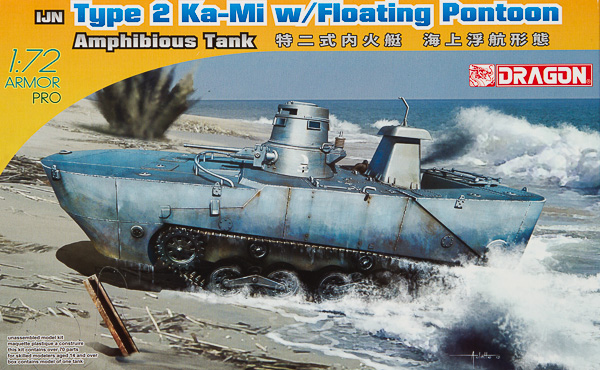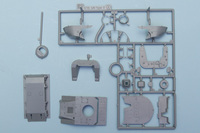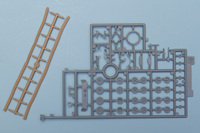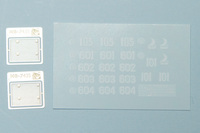
Dragon 1/72 Type 2 Ka-Mi Amphibious Tank w/Floating Pontoon
By Chris Banyai-Riepl
Overview
Based on the Type 95 Ha-Go light tank, the Type 2 Ka-Mi was the Imperial Japanese Navy's first amphibious tank. Designed for amphibious invasion, the Type 2 Ka-Mi entered service too late to take part in the initial expansion of Japan in the Pacific. Only 184 were built, and its complex construction resulted in long production cycles.
The Kit
 Building on their earlier release of the Type 95 Ha-Go light tank, Dragon has released the Type 2 Ka-Mi derivative. Molded in the typical light gray plastic found in other Dragon kits, this vehicle comes with DS tracks and a small bit of photoetch. The decal sheet provides basic markings for several options.
Building on their earlier release of the Type 95 Ha-Go light tank, Dragon has released the Type 2 Ka-Mi derivative. Molded in the typical light gray plastic found in other Dragon kits, this vehicle comes with DS tracks and a small bit of photoetch. The decal sheet provides basic markings for several options.
Construction is fairly straightforward, with the one-piece lower hull needing only the running gear and screws to complete. The suspension is made up from separate inner and outer road wheels, as are the drive and idler wheels. The screws have separate shafts, with the blades separate. Once the lower hull is finished, the large one-piece upper hull can be attached, with a separate front piece completing the major hull assembly.
 The turret is nicely detailed, with a separate turret ring, separate hatches, and a nicely detailed gun emplacement. This fits onto the main hull and in very short order the kit is looking like a tank. The photoetch piece forms the shroud around the exhaust, and with the addition of the DS tracks, the tank could then be painted and finished, should you want to portray your Type 2 Ka-Mi without the flotation gear (as it did operate in that manner).
The turret is nicely detailed, with a separate turret ring, separate hatches, and a nicely detailed gun emplacement. This fits onto the main hull and in very short order the kit is looking like a tank. The photoetch piece forms the shroud around the exhaust, and with the addition of the DS tracks, the tank could then be painted and finished, should you want to portray your Type 2 Ka-Mi without the flotation gear (as it did operate in that manner).
Of course, the reason for getting this kit is to have that interesting flotation gear, so to build up the Type 2 Ka-Mi with all of that, you'll be adding a front and rear assembly. Both of these have a one-piece lower section with separate top decks. The forward piece also has a bit of railing, while the rear has some other added details. There is also a three-piece engine intake cover, and a three-piece cupola extension for the turret.
 With everything together, it's time to paint up the tank. The overall color is a dark gray, and the only markings found are some small turret numbers and numbers on the rear hull. Examples included are "101" from Kwajalein Island in 1944, "105" from Papua New Guinea in 1944, and "601" through "604" from Papua New Guinea in 1944. All of these markings are in white.
With everything together, it's time to paint up the tank. The overall color is a dark gray, and the only markings found are some small turret numbers and numbers on the rear hull. Examples included are "101" from Kwajalein Island in 1944, "105" from Papua New Guinea in 1944, and "601" through "604" from Papua New Guinea in 1944. All of these markings are in white.
Conclusion
This is an interesting little tank that will definitely look different next to some more traditional armored vehicles. It is a simple construction and simple color scheme, so this could easily be a pleasant weekend distraction to build. My thanks to Dragon Models USA for the review sample.
